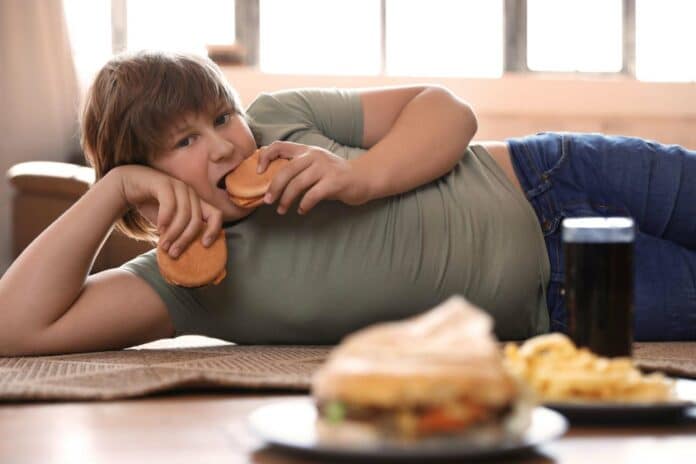A recent study found that sitting often during childhood and young adulthood leads to more body and belly fat. But here’s the good news: doing light exercise can completely undo this effect. Even moderate-to-vigorous exercise helps, but less. The study, done by the universities of Bristol and Exeter, University of Colorado, and the University of Eastern Finland, was published in Nature Communications.
Childhood and teenage obesity can lead to serious health problems in adulthood, like heart, metabolic, neurological, and muscle issues. Using body mass index (BMI) to measure obesity in kids is not great because it doesn’t tell the difference between muscle and fat.
Recent findings show that childhood obesity, measured with BMI, is linked to a higher risk of early death in the mid-forties. We know that lifestyle changes, like being less sedentary and more active, can help. However, we need more data on kids’ activity levels and fat measures.
We don’t know how effective light physical activity (LPA) is in preventing obesity or how much less sitting time is needed for better health in young people. This lack of information makes it hard to create practical health guidelines. A recent report says that over 80% of teens worldwide don’t meet the recommended 60 minutes of moderate-to-vigorous physical activity (MVPA) per day by the World Health Organization.
If things don’t change, physical inactivity could cause 500 million new cases of diseases like heart problems, obesity, and diabetes by 2030, costing $27 billion each year. This severe prediction highlights the urgent need for research on the best ways to prevent these health risks.
This is the first time anyone has looked at how kids’ movement, measured with a particular device called an accelerometer, affects their body fat in the long term. It’s tough to do because it’s expensive and complicated to keep track of a large group of kids over many years, constantly checking how active they are and how much fat they have.
But now, there’s a study using the data from the University of Bristol’s Children of the 90s project, the most extensive and extended study in the world to measure physical activity and fat in kids. They followed 6,059 kids, mostly 11 years old, until they were 24, for about 13 years. The kids wore a device on their waist that measured how much they sat and did light activity and vigorous activity. Their body fat and muscle were measured with an X-ray machine at ages 11, 15, and 24.
Researchers also checked other things like their blood, blood pressure, heart rate, if they smoked, how much money their family had, and if anyone had heart problems. All this information helped them understand how movement and fat are connected growing up.
Over the 13-year study, sitting time increased from around 6 hours daily in childhood to 9 hours daily in young adulthood. Light activity dropped from 6 to 3 hours daily, while moderate-to-vigorous activity stayed about 50 minutes daily from childhood to young adulthood. They found that every minute spent sitting was linked to gaining about 1.3 grams of body fat. Children of both gender gained around 10 kg of fat during this time, but sitting might have contributed 700 grams to 1 kg of that fat gain (about 7-10%).
Conversely, every minute of light activity during this period was linked to losing about 3.6 grams of body fat. This suggests that light activity could reduce the total body fat gained by 950 grams to 1.5 kg during the 13 years (around 9.5-15% less fat gain overall). Interestingly, spending more intense activity, like the recommended 60 minutes a day by the World Health Organization, was linked to a 70 to 170-gram reduction in total body fat mass (about 0.7-1.7%).
Dr. Andrew Agbaje, physician and pediatric clinical epidemiologist at the University of Eastern Finland, said, “Our study provides novel information that would be useful in updating future health guidelines and policy statements. Before this study, it was impossible to quantify the long-term contribution of sedentary time to fat mass obesity and the magnitude by which PA may reduce it. Our study confirmed the report from a recent meta-analysis of 140 school-based randomized controlled trials across the globe that engaging in MVPA had minimal or no effect in reducing childhood BMI-obesity.”
We’ve found that light physical activity (LPA) is good for the heart, lowers inflammation, and reduces cholesterol levels in kids, teens, and young adults even more than moderate-to-vigorous physical activity (MVPA).
These discoveries show that LPA could be a secret weapon in stopping the buildup of body fat from early on. It might be about ten times more effective than MVPA, but you need at least three hours of it each day. LPA includes taking long walks, doing household chores, slow dancing, gentle swimming, and easy biking. It’s time to change the focus from getting an average of 60 minutes of MVPA to aiming for at least three hours a day of LPA.
LPA counteracts the adverse effects of sitting too much, especially in young people. Our recent studies suggest a significant shift in how we fight against obesity, inflammation, and heart problems starting from childhood. Instead of stressing that 80% of teens don’t meet MVPA guidelines, we should encourage and support more LPA. Public health experts, policymakers, journalists, bloggers, doctors, and parents should promote regular and continuous participation in light activities to prevent childhood obesity.
Journal reference:
- Agbaje, A.O., Perng, W. & Tuomainen, TP. Effects of accelerometer-based sedentary time and physical activity on DEXA-measured fat mass in 6059 children. Nature Communications. DOI: 10.1038/s41467-023-43316-w.
